




This is me, Sandra, calling myself a fashion designer whilst neck-deep in fabric scraps, old jeans and smallest pieces of materials I have kept and labelled as ‘‘potential”. Trying to minimise the waste and turn every leftover into something unique, wearable, desirable, I have immersed myself in this eternal mission to create something to be proud of.
Maybe it’s a bit mad, this idea that fashion can save the world, or at least not make it worse. Sometimes I wonder what am I doing here, weaving and stitching together the frayed pieces of someone else’s life and daring to call it couture.
These past two years have been a continuous exploration of materials, means and techniques, trying to show that you can stitch sustainability and style together. That there is potential to make sustainability sexy and scalable.
There is transformative power in upcycling. I don’t see waste, I see possibilities. And as I continue to experiment, innovate, and push the limits of my craft, I hope this is just the beginning of a journey that will inspire others to see the beauty in what is often discarded.
Sandra Luks


When I started my MA in the Estonian Academy Arts in the accessories’ department, I was reluctant to continue after the first day as the mission was yet unclear and time felt entirely wasted. Why didn’t I go and study sciences instead? It would at least feel more worthwhile than creating more things onto this planet.
Fast-forward a pretty slacked semester, my brain riddled with thoughts of dropping out, I find myself in Nairobi with a small group of fellow wide-eyed design students brought together for two months by a shared idealism and an itch to make something that mattered.
The project was grand in its conception: called “Completely out of Fashion”, it had a mission to teach design skills to a selected group of local women with struggling backgrounds, to create collections from the mountains of post-consumer textiles and pave the way for a design hub where such ideas would be further explored, after we leave.
We worked tirelessly every day, sorting through and working with what can only be described as piles of garbage. Everyone found their own techniques and for me, the simplest form of weaving turned out to be the winner.
That trip was the beginning for me. Not for the education, but for a much grander purpose. It planted a seed, one that would take root and grow. I realized then that upcycling didn’t have to look like a DIY project slapped together in someone’s craft room. It could be serious, it could be aesthetic, it could be commercially desirable. And more than that, it could be a way to bring awareness, to make people see what we’re doing to this planet and each other. There was so much work to be done, and I was going to be playing a part in it, come hell or high water.
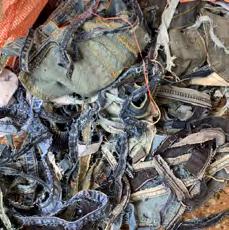
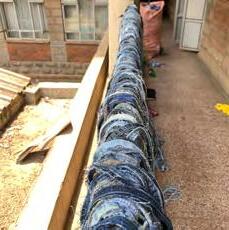
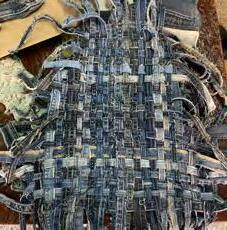



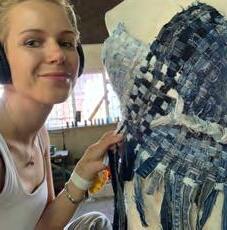




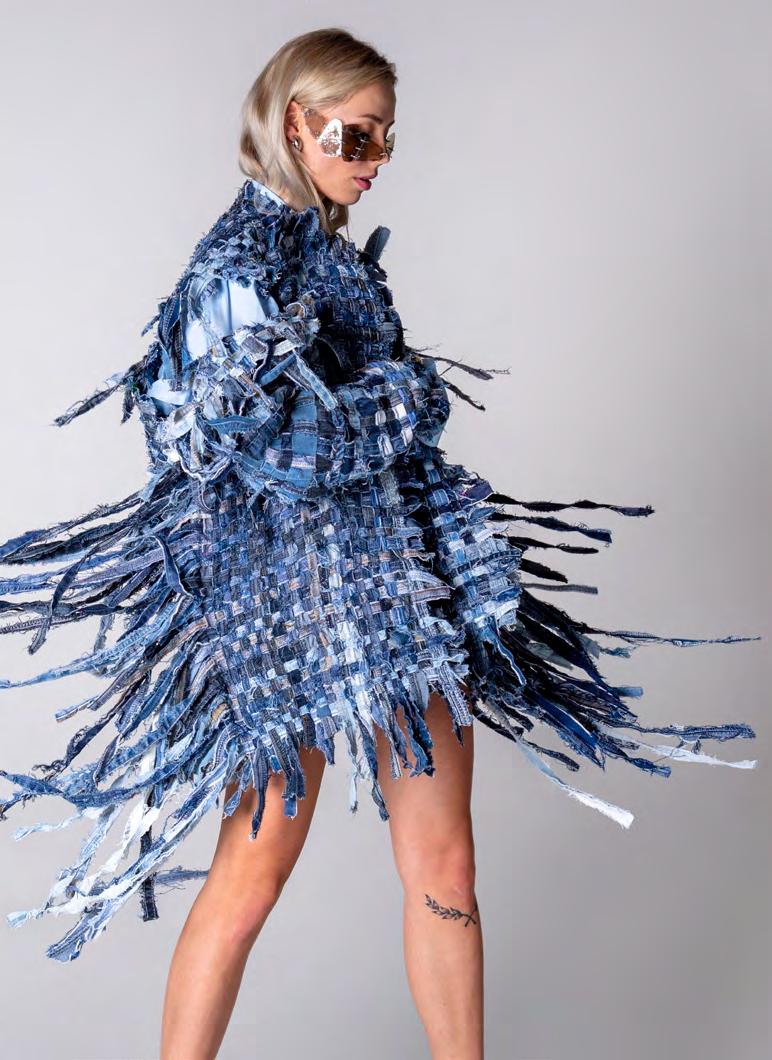

Back in my small studio in Tallinn, no longer surrounded by the mountains of textile waste in Kenya, I needed to explore our own “resources” and figure out if I can relieve the pressure on that issue here.
From my father alone, I collected about three big bags full of jeans that had just been sitting in the basement since the 90s. Friends were also relieved to hand over their broken jeans and not having to feel guilty about throwing them out. And should I be needing extra, Uuskasutuskeskus would provide me with old jeans preparing to travel into the vastness of some obscure African landfill.
I developed my processes further into sewing the fabric of the jeans into strips and using them alongside the seams. I kept all the pockets, waistbands, and zippers, knowing that I would figure out a use for them. Eventually. The famous TikTok mockery videos about hoarding and the phrase ‘’it has potential’’ hit too close to home, but I had the storage and the ambition to not become my soviet parents keeping everything hidden away for eternity.
The process of ripping, stitching and weaving was slow and meticulous. It wasn’t just about making clothes anymore; it was about storytelling, about weaving together the old and the discarded into something beautiful and meaningful. It was about using everything at my disposal whilst being aware of the harsh reality where not everything can be saved and when you do need to create waste, make it minimal.
I created accessories, experimenting with every scrap of material I could get my hands on. I wanted to show that sustainability could be stylish, that upcycling wasn’t just about patchwork DIY projects but about creating pieces that could hold their own on any runway.
Luckily my work was recognised and I was asked to take part of fashion shows in Tallinn and Stockholm. For the first time, I felt like people were really seeing what I was trying to do. It wasn’t just about fashion; it was about changing the way we think about waste and design.
I knew I had to take it even further. So I introduced the collection to New York City.


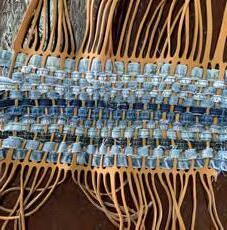
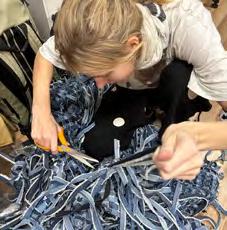










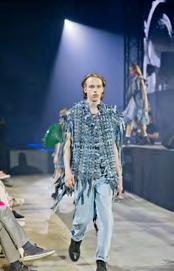


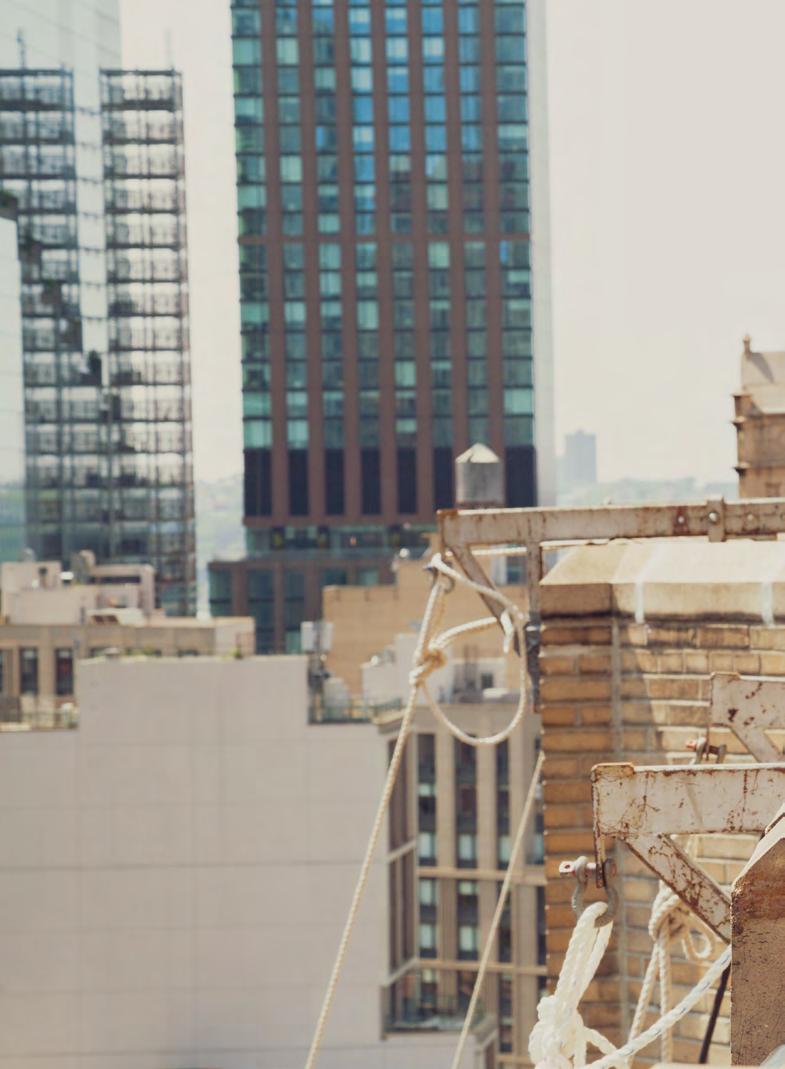


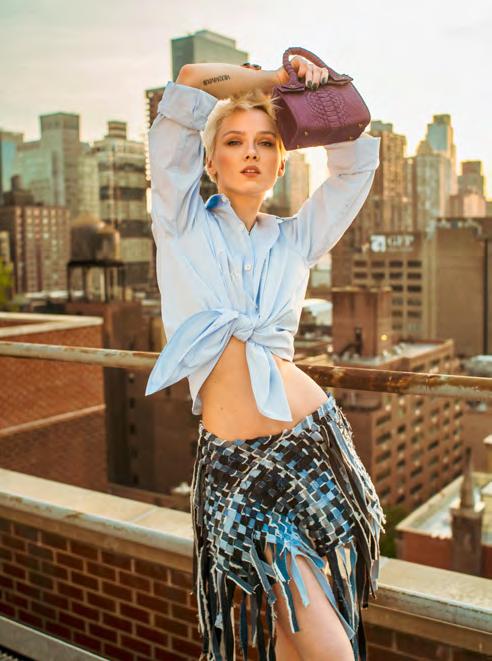

NYC proved a success and inspired me to continue the mission. In April 2024, I took part in Tallinn Fashion Week alongside a brand NADA that focuses on made-to-measure modern tailoring from deadstock materials. We combined our strengths and delivered a collection that balanced the production with the slower, more deliberate process of sustainable craftsmanship.

With my denim creations, I wanted each piece to speak for itself, to be something that people would choose not just for its story but for how it made them feel. This collection pushed me to dig deep into my stash of materials—the ones I had kept with a label “it has potential”. I began experimenting with pockets, then waistbands, combining them into a form of a corset or a jacket.
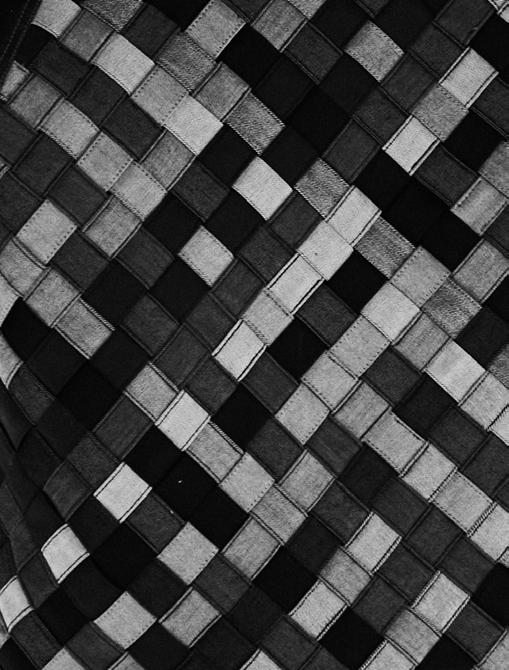
Making sustainability sexy and scalable has always been my goal, and this was the moment for testing the possibilities. Details produced by hand, assembled together in a small local factory allowed me to speed up the production without compromising my commitment to sustainability, showing that it could meet industry demands while staying true to its ethical roots.
This experience showed me that sustainable fashion could also be as polished and desirable as any other collection on the runway. It reminded me that the journey of sustainability is about constantly exploring new techniques, and finding beauty in the unexpected. From this, a very special material from the warp threads of denim was born - lace. And now the exploration continues.





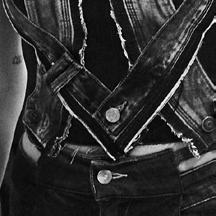

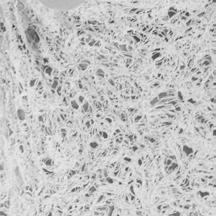
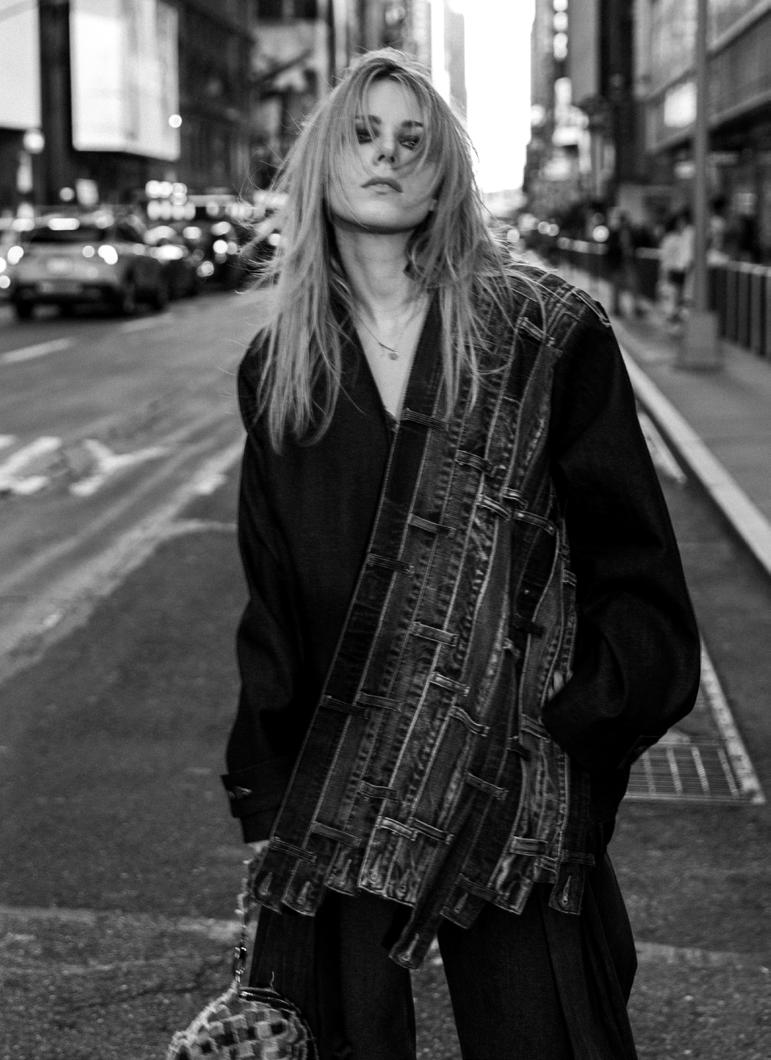








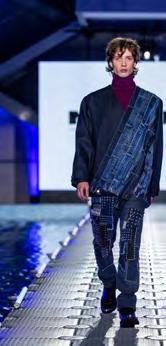




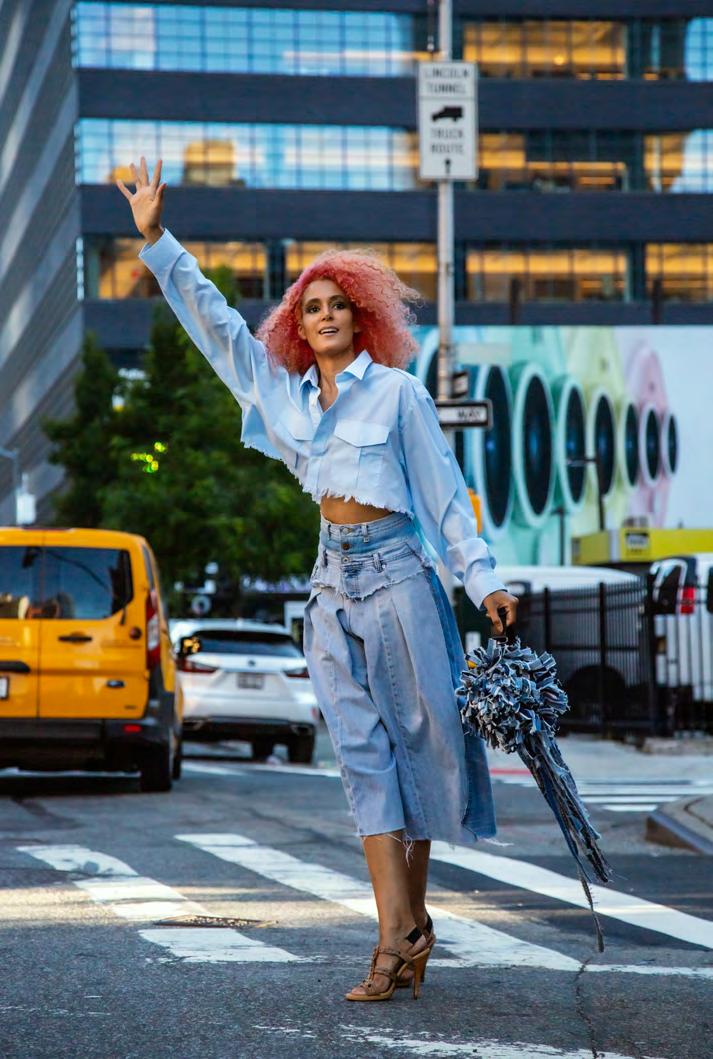



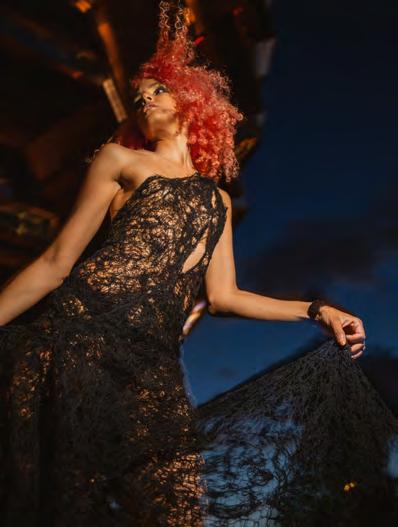

The denim lace - a juxtaposition of fragility and durability, a reminder that even the most rugged materials have a delicate side. It is a celebration of craftsmanship, of taking something worn and weathered and turning it into something beautiful and refined.

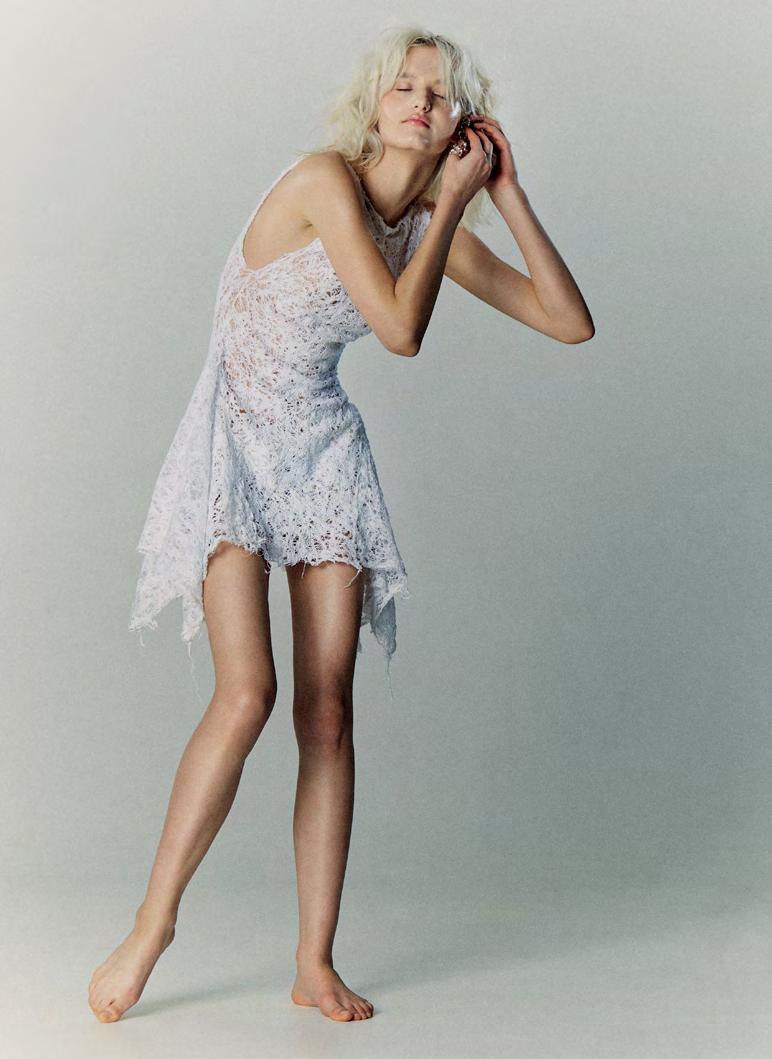
Creating denim lace is an intricate and innovative process, starting with the simple act of ripping up old jeans. In my first collection, I used strips of denim to weave garments, but these strips naturally frayed at the edges, leaving loose threads hanging. Instead of discarding these threads, I collected them by meticulously cleaning each strip - a time-consuming but essential part of the process.
Once I had gathered enough threads, the next step involved using a special biofilm that dissolves in water. I carefully placed the threads between two layers of this film, arranging them according to the desired pattern and color. Then came hours of stitching on the
machine, ensuring that the threads would stick together to form a uniform fabric. The attention to detail required here is what makes this process feel so much like couture—it’s slow, deliberate, and deeply satisfying.
The final step is poetic in its simplicity—hanging the sewn material outside, waiting for the rain to naturally dissolve the biofilm. What’s left is a delicate lace, a fabric that’s both fragile and durable, born from the very threads that once held denim together. Each piece of denim lace carries with it the history of the jeans it came from, transformed through patience and craft into something entirely new.













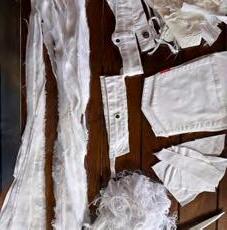












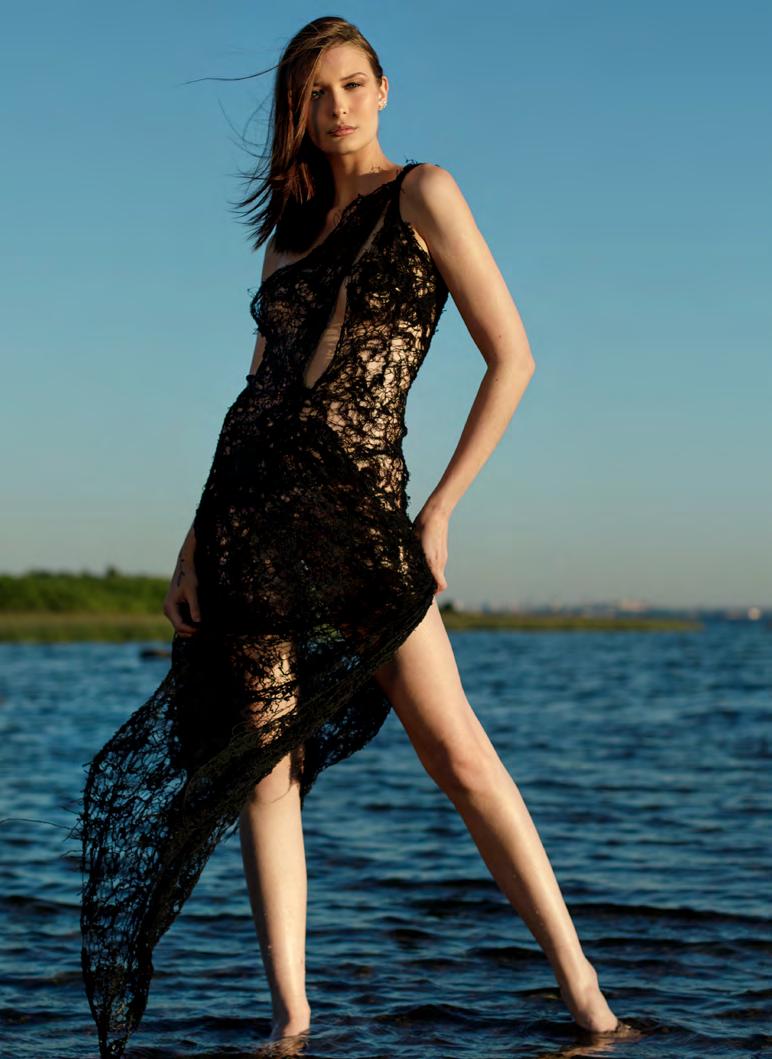
As I reflect on this journey—from the textile mountains of Kenya to the creative mess in my Tallinn studio, and finally, to the bustling high-fashion scene in New York City—I am filled with both a sense of accomplishment and anticipation. Every piece I’ve created has been a step forward, a new way of looking at the materials we so often take for granted. But I know this is just the beginning. There’s a whole world of possibilities out there, waiting to be discovered and transformed. My hope is that, as I continue this path, I’ll find even more innovative ways to bring my creations to life—ways that honor both the beauty of fashion and the responsibility we have to our planet. This journey is far from over, and I’m excited to explore where it will lead me next.